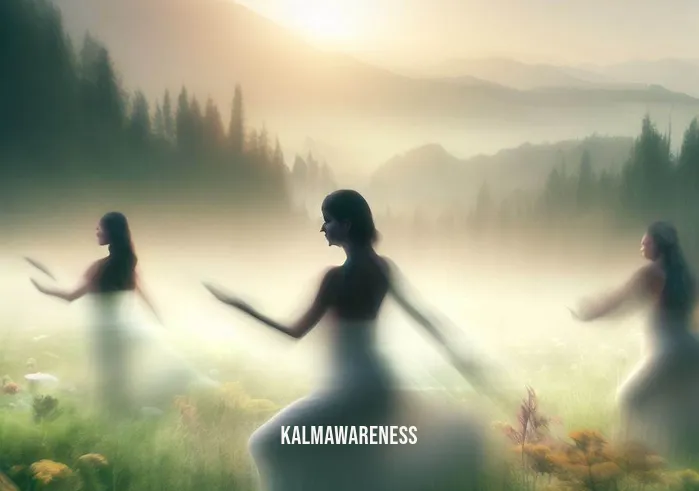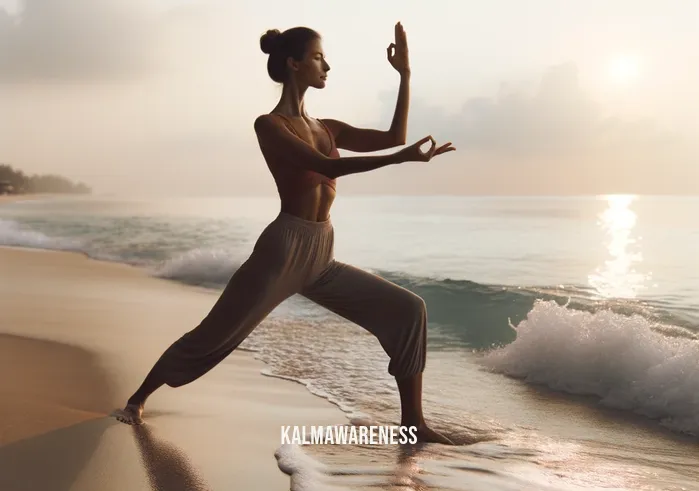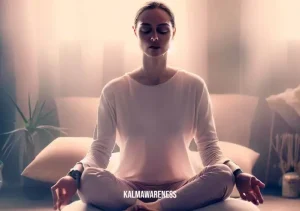The Power of Mindful Movement Meditation: A Deep Dive into Body Awareness
The essence of meditation has been captured and refined in various forms, but one of the most profound practices is mindful movement meditation. This method unites the ancient principles of Yoga, Tai Chi, Qigong, and more to cultivate a robust mind-body connection.
Discovering Mindful Movement Meditation
Mindful movement meditation isn’t just about moving the body; it’s a sophisticated blend of physical motion with mental stillness. It’s about noticing every sensation as you move, feeling every stretch, every rotation, every single beat of your heart. At its core, it emphasizes body awareness.
“Movement is a medicine for creating change in a person’s physical, emotional, and mental states.” – Carol Welch
Diving deep into anguish sometimes, we realize the importance of our body’s ability to heal. The practice allows us to touch upon the depths of our emotions, offering a soothing effect that is profoundly therapeutic.
The Interplay between Yoga and Mindful Movement
Yoga is an ancient practice that serves as the bedrock of mindful movement. It’s not merely about striking poses or holding stretches. It’s about diving into every motion, every stretch, understanding and feeling each part of our body as we move through various asanas. For instance, in the fetal pose, one doesn’t just curl up; one feels the security, the comfort, and the introspection it provides.
There are various avenues of exploring Yoga. For those looking for structured pathways, yoga sequencing offers an excellent methodology to design transformative yoga classes. For beginners, starting with basic yoga can ease them into the discipline.
Tai Chi & Qigong: The Dance of Energy
Both Tai Chi and Qigong are Chinese practices that embody the essence of mindful movement. Delving into the world of meditative Chinese discipline, one can understand how these practices emphasize the flow of Qi or life force through the body. By harnessing this energy, practitioners can achieve a balance of Yin and Yang – the dualistic nature of existence.
Breathing: The Silent Anchor
While movements dominate the scene, breathing plays a crucial role in anchoring our awareness. Breathing is the tether that binds the mind to the body, grounding our experiences and intensifying our awareness. Those suffering from auditory distractions can explore ways to overcome meditation ringing in ears to focus on their breathing patterns.
The Inclusive Nature of Mindful Movement
Mindful movement is for everyone. It doesn’t discriminate. For instance, an article highlighting the experiences of a meditation black woman showcases the universality of the practice. Similarly, the image of a guy meditating breaks stereotypes, underlining the idea that mindful movement is a journey for all.
- Benefits of Mindful Movement Meditation:
- Enhanced Body Awareness: Paying attention to our body parts and understanding their movement mechanics.
- Mind-Body Synergy: Like in teaching yoga beyond the poses, it’s about achieving a harmonious balance between mental intentions and physical manifestations.
- Flexibility: Not just physical but also yoga for a flexible mind and body.
- Therapeutic Effects: Achieving tranquillity in motion and stillness, much like the benefits of a mindful women day spa.
Continue with us in the next part of the article, where we’ll delve deeper into the historical roots of mindful movement meditation and explore advanced techniques and practices that can enhance your meditation journey.
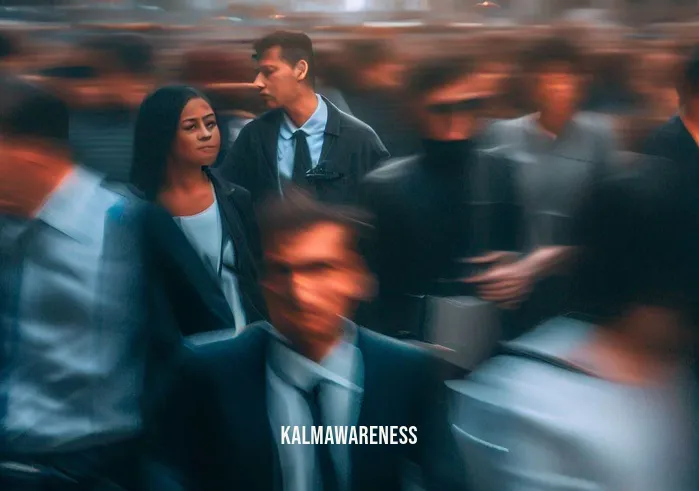
The Historical Roots and Techniques of Mindful Movement Meditation
Mindful movement meditation has deep historical roots, spanning various cultures and traditions. This chapter delves into its history, shedding light on ancient practices that have informed its current form. Additionally, we will explore advanced techniques that can elevate your mindful movement experience.
Historical Overview
Mindful movement meditation isn’t a new concept. Ancient civilizations recognized the deep connection between the mind and body, and their practices were an embodiment of this understanding.
- Ancient India: The birthplace of Yoga, India’s rich spiritual history introduced the world to the idea of merging movement with mindfulness.
- Ancient China: The Chinese philosophies gave rise to practices like Tai Chi and Qigong. They believed in the harmonious flow of energy, or Qi, throughout the body, which is touched upon in the meditative Chinese discipline.
- Other Cultures: From the dervishes of Turkey to the shamanic dances of indigenous tribes, movement has always been a spiritual experience. They acknowledged, for instance, the sacred act of touching a body part with intent and mindfulness.
Advanced Techniques
Elevating your practice of mindful movement meditation requires more than just physical discipline. It’s about refining your mental processes, enhancing your awareness, and adopting advanced techniques.
Visualization: Like an athlete preparing for a race, visualizing your movements before executing them can add depth to the experience. This technique aids in connecting the conscious and subconscious minds.
Affirmations: Incorporating positive affirmations can make your movements more intentional. For instance, while practicing a yoga pose, silently affirming, “I am strong and grounded” can intensify the experience.
Partner Practices: Engaging in practices like teaching yoga beyond the poses can add a fresh dimension to your meditation. It emphasizes connectivity, not just within oneself but with others.
Tactile Feedback: Using props or tools like a Zafu can help improve posture and enhance sensory feedback, deepening the practice.
Popular Styles of Mindful Movement Meditation
Different people resonate with different styles of meditation. Some prefer the serenity of solo practices, while others are drawn to group dynamics. Let’s explore some popular styles through a concise table:
| Style | Origin | Focus |
|---|---|---|
| Yoga | India | Breath, posture, flexibility |
| Tai Chi & Qigong | China | Flow of energy, balance of Yin and Yang |
| Shamanic Dance | Indigenous Tribes | Connection to nature, invoking ancestral spirits |
| Sufi Whirling | Middle East | Achieving trance states, connection to the divine |
| Modern Dance Meditation | Contemporary World | Expressing emotions, healing trauma, movement in a sentence |
Inviting you to continue further, in the next chapter, we’ll delve into the therapeutic benefits and science behind mindful movement meditation. We’ll also touch upon how it’s being adopted in modern therapeutic practices and its promising future.
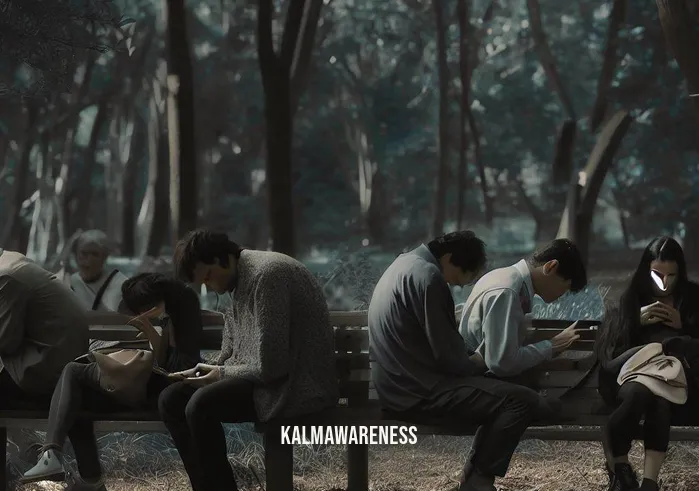
The Therapeutic Science of Mindful Movement Meditation
The contemporary world, bustling with chaos and challenges, requires healing modalities that transcend mere physical well-being. Mindful movement meditation emerges as a holistic approach, backed by scientific evidence, offering profound mental, emotional, and spiritual benefits. By embracing this practice, individuals navigate the turbulent waters of life, harnessing strength, resilience, and hope.
Scientific Evidence and Healing
In recent years, mindful movement meditation has piqued the interest of the scientific community. Researchers are keen on exploring its potential benefits and understanding its healing prowess.
The brain, when engaged in meditative practices, exhibits increased alpha and theta wave activity. These brainwave patterns are associated with relaxation, creativity, and heightened intuition. Moreover, a consistent mindful movement practice can induce neuroplasticity, leading to structural changes in the brain, particularly in regions associated with memory, self-awareness, and empathy.
Another fascinating revelation comes from studying the body’s response during these practices. There’s a marked decrease in cortisol, the stress hormone, and an increase in endorphins, promoting a sense of well-being and euphoria.
“The mind can go in a thousand directions, but on this beautiful path, I walk in peace. With each step, the wind blows. With each step, a flower blooms.” – Thich Nhat Hanh
Hope and Resilience
One of the most profound benefits of mindful movement meditation is the cultivation of hope and resilience. Amidst adversities, hope serves as a beacon, guiding individuals towards healing and transformation.
“Hope is the thing with feathers that perches in the soul – and sings the tunes without the words – and never stops at all.” – Emily Dickinson
People from various walks of life, be it someone dealing with trauma or an individual looking for inner peace, find solace in this practice. For instance, the warriors at ease training offers therapeutic techniques for military personnel, aiding in their recovery and ensuring mental well-being.
“In the middle of difficulty lies opportunity.” – Albert Einstein
These sessions, grounded in the principles of mindful movement, emphasize emotional release, trauma healing, and resilience building. They equip individuals with tools to face challenges head-on, offering hope even in the darkest moments.
Incorporating Daily Practices
For many, mindful movement meditation isn’t just a one-off session but a way of life. It’s interwoven into their daily routines, offering moments of reflection, gratitude, and peace.
Whether it’s practicing Rodney Yee’s daily yoga or spending a few moments in silent reflection, these practices serve as anchors. They provide stability, ensuring individuals remain grounded and centered, no matter the external circumstances.
“Every morning we are born again. What we do today is what matters most.” – Buddha
Mindful Movement in Contemporary Settings
Beyond personal practices, mindful movement meditation finds its place in modern therapeutic settings. From rehabilitation centers to corporate wellness programs, its principles are being widely adopted. Professionals understand its value, integrating techniques like watching someone do yoga to foster group cohesion and collaborative energy.
Furthermore, institutions are recognizing the benefits of this practice for specific groups. For instance, women can find tailored programs at the mindful women day spa, where sessions cater to their unique needs and challenges.
“Healing is a matter of time, but it is sometimes also a matter of opportunity.” – Hippocrates
In the subsequent chapter, we will delve deeper into the cultural aspects of mindful movement meditation, exploring its manifestations across different cultures and traditions. Join us as we embark on this enlightening journey, uncovering the tapestry of practices that have shaped this incredible form of meditation.
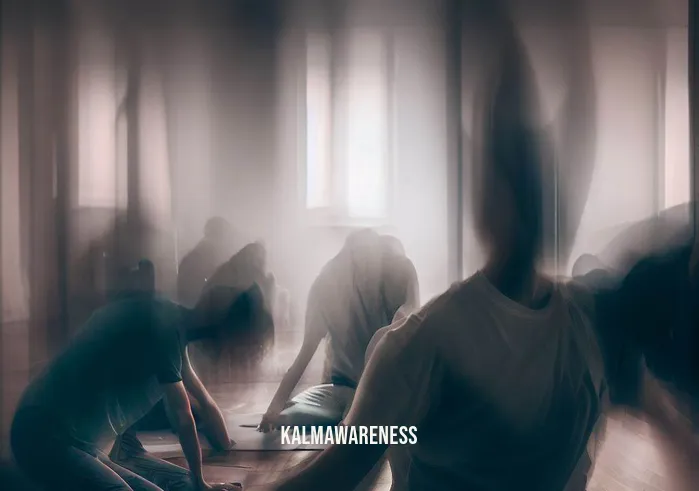
The Cultural Spectrum of Mindful Movement Meditation
As we journey through the realm of mindful movement meditation, it’s vital to acknowledge the vast cultural mosaic that has painted its intricate canvas. Across continents, cultures have embraced this practice, shaping and molding it in their unique ways. In this chapter, we’ll explore these cultural imprints, shedding light on practices that resonate with the same core philosophy, yet express it so diversely.
Cultural Adaptations
Africa
- Traditional Dances: Many African tribes have dances deeply rooted in spirituality and mindfulness. These dances, often performed during ceremonies or rituals, serve as a bridge between the physical and spiritual realms.
South America
- Shamanic Rituals: In indigenous communities, shamanic rituals involve meditative dances to connect with nature, ancestors, and higher spirits.
Europe
- Sufi Traditions: Known popularly as “whirling dervishes,” these practitioners from the Sufi traditions in parts of Europe and the Middle East employ dance as a form of meditation to connect with the Divine.
Asia
Bhutan’s Meditative Dances: In the Himalayan kingdom of Bhutan, traditional dances during festivals are a form of moving meditation, celebrating their unique culture and spirituality.
The Meditation of a Black Woman: This practice, rooted in ancient Asian traditions, focuses on the embodiment of feminine energy, celebrating strength, resilience, and grace.
Key Elements across Cultures
While these practices manifest differently across cultures, certain universal elements are prevalent:
Music and Rhythm: Whether it’s the drums of African tribes or the flutes in Asian ceremonies, music often sets the tone, guiding the practitioner deeper into their meditative state.
Nature: Be it the warriors finding ease in the heart of a dense forest or a guy meditating by a serene lakeside, nature plays a pivotal role. The elements – earth, water, fire, and air – become integral to the meditation experience.
Community: Mindful movement meditation often thrives in a community. People come together, moving in harmony, feeding off each other’s energies.
Intention: Regardless of the cultural backdrop, the intention remains a cornerstone. Whether it’s to seek blessings, celebrate nature, or merely connect with one’s inner self, the purpose drives the practice.
Modern Evolution and Adaptations
As our world becomes a global village, these practices are no longer confined to their places of origin. Fusion and adaptation have led to the birth of novel forms, rooted in tradition yet contemporary in approach.
Yoga Retreats: Modern yoga retreats often incorporate diverse traditions. For example, an intimate connection with anguish might be explored through a combination of African dance and traditional yoga.
Workshops: Various workshops integrate multiple forms of mindful movement. Imagine learning about fetal pose one moment and transitioning into a Sufi whirl the next.
Digital Platforms: Online platforms offer a plethora of resources. From understanding the basics like yoga for beginners to diving deep into specialized forms like yoga sequencing, the digital age has truly democratized knowledge.
Benefits of Cultural Integration
Cultivating a Global Perspective: By embracing practices from diverse cultures, one cultivates a more holistic, global view of mindful movement meditation.
Richer Experience: Integrating elements from different traditions can offer a richer, more layered experience.
Fostering Unity: Recognizing the common threads that bind different cultures can foster a sense of unity and brotherhood.
Dive deeper with us in our next chapter, where we explore the future prospects of mindful movement meditation. As the world evolves, so do these practices. What does the future hold? Join us in our exploration!
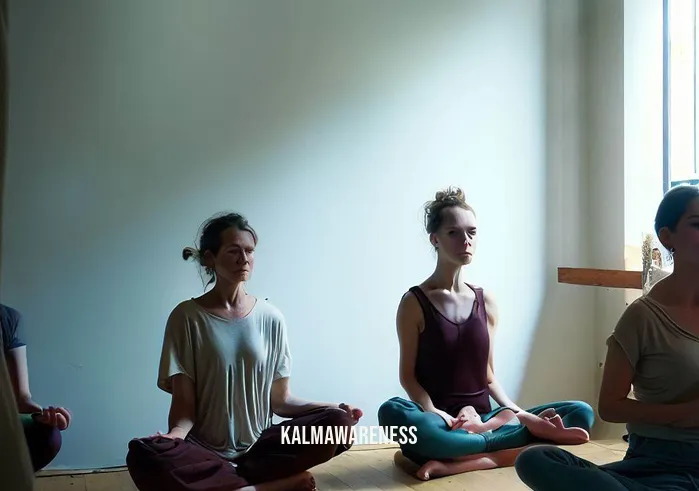
The Mindful Movement Meditation: A Journey Forward
As we’ve traveled through the vast and intricate world of mindful movement meditation, we’ve uncovered the historic roots, cultural adaptations, diverse practices, and the teachings of some of the world’s most inspiring thinkers. It’s now time to look towards the horizon, to the future of this profound practice and its place in our fast-paced, ever-changing modern world.
The Evolution of Mindful Movement in a Digital Age
While ancient practices such as yoga and Tai Chi have been the cornerstone of mindful movement, we are witnessing a technological revolution that makes these practices accessible and adaptable for a new generation.
Virtual Reality Meditation: Imagine being transported to the Himalayas or a serene beach, all while practicing meditation in the confines of your living room. With VR, such movement in a sentence or moment is possible.
AI-Powered Personal Coaches: As we’ve seen with resources like Ann Timer, the future might hold AI-driven personal meditation and movement coaches tailored to individual needs.
Wearable Tech for Tracking: Devices are now available that not only monitor physical health but also track mindfulness and meditation progress. It’s like having a personal mindful women day spa experience right on your wrist.
The Importance of Staying Rooted
Even as we embrace this digital evolution, the importance of staying rooted to the core principles of mindful movement meditation cannot be stressed enough.
Digital Detox Retreats: While technology brings mindful movement to our fingertips, there’s an increasing trend towards ‘unplugging’. Retreats that emphasize on a complete digital detox, like the ones teaching how to sit on zafu, allow individuals to connect deeply with themselves, devoid of any digital distractions.
Back to Nature: Combining meditation with nature treks, forest bathing, or even just practicing yoga outdoors can offer a flexible mind and body experience, reminding us of our intrinsic connection with the natural world.
Community and Collaboration
One of the most promising aspects of the future of mindful movement meditation is the growing sense of global community and collaboration.
Worldwide Webinars and Workshops: Platforms now connect masters from the East with enthusiasts in the West, bringing the global community closer.
Collaborative Retreats: Imagine a retreat where Tai Chi masters, yoga gurus, and Qigong teachers come together, like in Rodney Yee’s daily yoga sessions, offering a blend of the best practices from around the world.
Final Reflections
It has been a profound journey, diving deep into the ocean of mindful movement meditation. As we move forward, it’s essential to remember the core essence of this practice – mindfulness. In every movement, in every breath, and in the silence between the notes, lies the potential for profound self-awareness and transformation.
As we wrap up this journey, it’s a gentle reminder to always stay curious, open-minded, and compassionate. While the practices and methods might evolve, the heart of mindfulness remains constant, guiding us through life’s many ebbs and flows.
Thank you for embarking on this journey with us. We invite you to explore more, dive deeper, and continue your exploration with our myriad of articles and resources. Whether you’re a seasoned practitioner or just starting out, there’s always more to discover. Until next time, keep moving, keep breathing, and keep being mindful. 🌿
